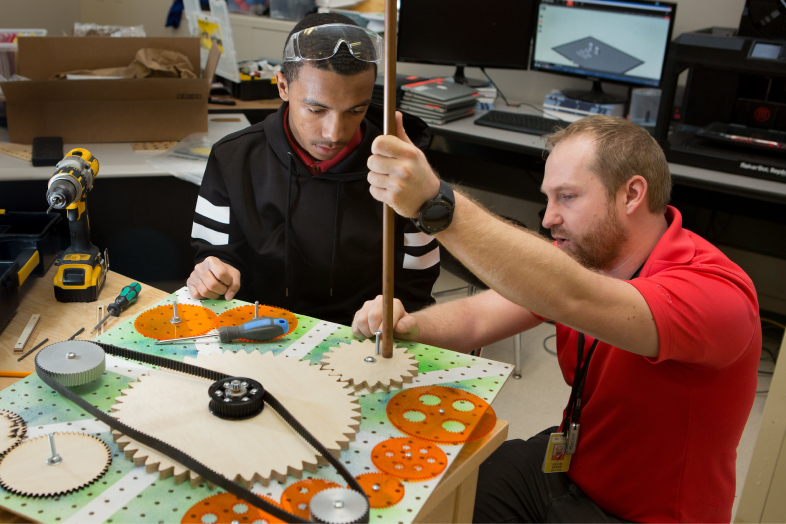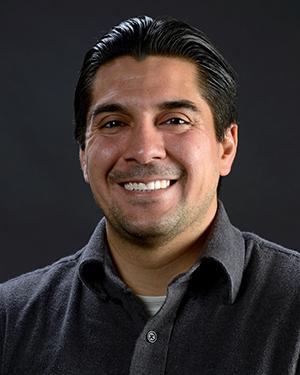When I tackled my first Colorado story on career and technical education, I was adamant it needed to focus on inequitable outcomes, especially among adults of color.
Since this was one of my first major projects for Chalkbeat, I worried about possible pushback. After all, history shows it’s not easy covering inequities because of the mismatch in who covers or edits stories about communities of color and a lack of understanding — often unintentionally — about which stories about people of color matter. The journalism profession, and especially those covering education, is dominated by white journalists.
And history just wasn’t on my side. The 1968 Kerner Commission report showed media coverage failed to accurately report on Black communities. More recent studies show media coverage doesn’t do enough to extend coverage beyond the bad events happening within communities of color. And even when the industry digs in, a study by two University of Wisconsin-Madison journalism professors showed white reporters often fail to accurately cover issues of race because of sourcing issues or a lack of understanding how to approach the work.
How Chalkbeat Colorado supported me, however, serves as a blueprint. My boss backed me when I advocated for this story, gave me the time to work on it, helped me track down the right sources and information, and trusted my experience as a reporter and as a person of color.
After all, I knew there was a story to be told about inequities that face adults from communities on the periphery. I covered older adults gaining their education for an Education Writers Association Fellowship. But I also grew up in Colorado as a Latino where opportunities often skip over people like me. I’ve seen even within my own family, opportunities for an education can slip by easily.
The resulting stories, thanks to that support from Chalkbeat, looked at how Colorado doesn’t do enough to attract adults of color to career education and how the state doesn’t track this data to hold itself accountable to all its communities. It included diverse voices and even allowed me to go to rural Colorado to report on and build the trust of communities that historically aren’t helped by the state or covered by journalists.
In the end, I learned more about Colorado and the challenges that faced rural communities and people like me. And I’ve used the trust I built to dig deeper into issues of race, not just that of Latinos, to extend coverage past career and technical education.
How to Advocate and Cover Diverse Perspectives in CTE
The most successful stories, whether they’re about career education or another topic, start with the drive to cover more than just politicians and policy. It’s sometimes tough, however, to advocate to editors to get the time to build trust within communities.
Colleagues I’ve talked to complain that editors say these stories might take too long, or some stories don’t have an obvious news hook. After all, covering people of color requires building trust, especially when the stories that matter most to communities aren’t told as often as the bad that happens to them. That takes time that impatient editors aren’t always willing to give.
Fair coverage also takes thinking about stories in different ways. It’s a point many white colleagues miss. Within EWA’s 2021 State of the Education Beat, reporters of color said many white colleagues either miss stories or leave out important information because they lack context about the communities they are covering. The same goes for socioeconomic mismatches. It’s hard to ask the questions when we don’t come from that background.
And, unfortunately, there are too few of us in the news industry for the work to fall just on the shoulders of journalists of color. According to the 2021 EWAreport, an outsized portion of education journalists are white — about 82%.
That’s why I like the simple advice of Open Campus Editor-in-Chief Sara Hebel to advocate for time to cover these stories, whether you’re a journalist of color or a white colleague wanting to build a deeper understanding of the communities they cover.
Her advice: Why wouldn’t we seek to take the time to build trust among all communities? You would never tell one side of a story, so why wouldn’t you cover all parts of a community and the inequity that exists?
So, take the time, advocate for the time, or demand the time from editors. Because like Hebel argues, that’s just good journalism. It’s our job to provide a fuller picture of the world around us, and that can be an easy sell to editors.
“You want your reporting to be genuine and reflect the real world,” she said.
And for white colleagues, I know, at times, the work can feel daunting. But keep in mind Hebel’s advice. Like any good journalist, we start with that first interview and then we expand and build trust from there to find other sources. With time, you’ll learn the fuller context of telling stories from the communities you want to cover.
Supporting Journalists of Color to Cover Race
Too often this type of work is left to reporters of color. That can be exhausting.
Naomi Harris, who covers race and equity for Open Campus, said often editors and news organizations rely heavily on journalists of color to cover issues of race. The weight that places on journalists of color can become overwhelming.
Harris said it’s invisible extra labor that is placed on reporters of color “to be the first person to speak up.” Reporters of color shouldn’t be the ones to change the system, she said. Instead, those decisions should be placed on those in power to seek to better understand the communities that their publications cover.
Harris also said stories should look beyond just the bottom line. Understanding communities and covering them sensitively means taking into consideration the way sources feel about their own experience and what they define as success. When Harris covered health training programs in Pittsburgh, she tried to consider what a college experience meant beyond just wages.
Sometimes a college education means a more stable job with better hours and health care. Those aren’t always the types of success that white editors sometimes think about, Harris said. But to understand community issues, you need to understand what a path toward a better life looks like, because money isn’t always the only answer, she said. Sometimes just having an opportunity means the world to someone.
“I talked a lot about this concept of resiliency because I was talking to a lot of students who were first generation, and college didn’t really seem like an option,” she said. “So they looked to these credential programs as an opportunity.”
A Changing Conversation About Diversity, Equity and Inclusion
Changes are underway to help build inclusive newsrooms and better coverage of race. Bianca Quilantan, a Politico higher education reporter and Institute for Citizens and Scholars fellow, said the racial reckoning we’ve dealt with as a country since the killing of George Floyd makes writing these stories even more relevant.
There is a news and business argument about covering these issues. There’s also a moral argument. And whether it’s one, the other or both, newsrooms across the country have tried to make a more concerted effort to cover race. On the flip side, however, news organizations have also backtracked
For Quilantan, action by her newsroom leaders has created a better environment.
Politico has also focused on hiring more diverse reporters and editors, Quilantan said, which makes it easier to identify the stories that need to be covered.
She’s better compensated for her work, which helps keep journalists of color in newsrooms, especially those who come from less affluent backgrounds.
And she’s seen how a more diverse newsroom better covers the United States; it gives a fuller picture of how policies impact people who aren’t just white.
Tips and Resources to Tackle Reporting on Race and CTE
- Keep a diverse source list: Quilantan said one practice that helps her keep diverse sources within stories is to keep a source list in a spreadsheet. Within that list, she keeps community contacts who can add perspectives, even when policies don’t have a clear angle that includes race. And sometimes those conversations lead to additional stories.
- Always ask your sources who else might want to talk: When reporters have time, Hebel recommends doubling or tripling the number of people you might normally think to talk to. Not everyone will make it in a story, but they can inform the reporting on what’s important.
- Review relevant resources: Need help finding the right words? New resources, such as Language, Please, help reporters and editors check the language they use within their stories to ensure it’s culturally sensitive.
Tips for Editors Overseeing Reporting on Race and CTE
- Listen more: Hebel said editors can listen more. And be OK to accept that your reporters might not want to speak to every aspect of covering diversity. While reporters of color and those from low-income backgrounds can offer valuable perspectives, giving reporters the space not to speak is just as important as asking them to speak on topics.
- Spearhead sensitivity reads: One way some organizations are changing how they approach stories is sensitivity reads to reflect cultural accuracy in stories.
- Ask for diverse sources from all reporters: Some publications ask reporters to consider within every story if they’ve included diverse stories and to provide that information in beat memos.

